Eurail Passes are famous as a way to save money while exploring Europe, but they are also confusing and often misunderstood. They are still an amazing money-saving tool for certain types of travelers, and not a wise idea for most others. Before Europe introduced dynamic rail pricing (like airfares, where the price varies depending on when you buy it), a Eurail Pass was an easy way to save money since all tickets had fixed prices that were generally fairly expensive. These days most travelers can save far more money just by buying their train tickets at least a few weeks in advance.
That said, Eurail Passes are still great for longer trips and especially for people who like to make plans as they go. Dynamic rail pricing made advanced tickets much cheaper, but it also made last-minute tickets MUCH more expensive. Below we will discuss Eurail Passes and whether they are a good idea for your trip or not.
Disclosure: This is a reader-supported website and some of the links are affiliate links where a small commission is paid to help keep this site going.
Note: This article was written in 2012 and has been continuously updated since then, so all information is current as of April, 2024.
Eurail 2024 changes: New countries and a mobile version
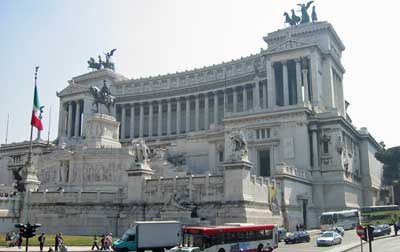
Aside from that it’s just the normal fact that they have updated the timetables as of December 2023 and have a few promotions going on, but those usually don’t happen over the busy summer season.
Eurail passes are now available in a mobile version
Until very recently, Eurail Passes were only available in paper form and they were quite confusing at first. You’d get a pass with a series of empty boxes on it and you’d need to enter your trip before you’d use your pass each day and then have the first conductor verify it. If you lost your ticket (and this was not uncommon), it was a whole ordeal to attempt to get a replacement.
Again in 2024 Eurail offers a fully mobile version that is delivered instantly to your mobile device with no delivery fee. And if you somehow lose your phone, you can resume using your Pass on your replacement with no extra headache. This is MUCH more convenient in every way and as long as you can keep track of your phone you’ll always have your train pass handy.
If your trip will be 2 weeks or less, a Eurail Pass probably won't be worth it

Eurail Passes are ideal for travelers on longer trips, and especially those who don’t want to plan all of their destinations and dates far in advance. If you have your itinerary pretty much planned out and you don’t require much flexibility, you’ll be far better off just locking in your dates and buying your train tickets as early as you can. Again, they can be surprisingly cheap if you buy 2 to 4 months out.
If you are age 27 or younger, a Eurail Pass is probably worth it

With this in mind, if you are lucky enough to still be 27 or younger, you should seriously think about getting a Eurail Global Pass Youth, partly because the sense of freedom instantly gets more expensive at age 28. The age cutoff was 25 until recently, so this change is a great deal for anyone who will be 26 or 27 at the start of their trip.
You aren’t guaranteed to save money by buying a Youth Eurail Pass, but chances are good that you WILL save money and you’ll definitely save a lot of hassle as well. Especially now that Eurail Passes come in a mobile form, it’s even that much more convenient to just hop aboard any train that is about to leave the station and not worry about buying or even having a ticket. Especially for young people, it can be really fun and exhilarating to literally just walk into a train station with your backpack and look at the departure board and then decide where to go at that moment.
If you are age 60 or over, a Eurail Pass could also be great value
Another fairly recent change is that anyone who is 60 years or older at the start of the use of a Eurail Pass now gets 10% off the normal adult fare. That new discount is going to make this a great value for many travelers who might have been on the fence about buying a full-price pass before.
>>>Check prices on Eurail Passes
If you are planning on traveling in 1st Class anyway, a Eurail Pass is probably worth it
Most 2nd Class trains provide similar comfort and legroom to Business Class airline seats, or at least close enough, so for most people it’s not worth the added expense for 1st Class. However, if you are rich or elderly or fear contact with strangers, a 1st Class Eurail Pass is probably worth it no matter what.
Not only do you get much more comfort and legroom in 1st Class, with only 3 seats across instead of 4, but there is another advantage to 1st Class on European trains. Since it’s mostly business travelers and wealthy people traveling in 1st Class, the carriages are almost always mostly empty except in the mornings and late afternoons between large cities. In 2nd Class the only available seats might be two seats in an 8-seat cabin with all the other seats taken up by a loud family or a group of rowdy friends. In 1st Class you are all but guaranteed a peaceful ride, and usually plenty of empty seats from which to choose.
A hidden Eurail Pass benefit: Making extra stops on travel days for free

Brussels in particular is one I recommend a short stop in because the small historic center around what they called the Grand Place is amazing and gorgeous, while the rest of the city is rather boring by European standards. With a Eurail Pass you can jump off the train in Brussels and explore the city center for a few hours (luggage storage is cheap and easy) and maybe have lunch, and then hop on a later train to complete your journey to Amsterdam. There are opportunities like this on many if not most trips between larger cities, and if you buy the point-to-point tickets you have to stay on the train you booked.
Another example is the high-speed train between Barcelona and Madrid, which takes about 2.5 to 3 hours in each direction. There are some interesting cities in between, but in this case you could take a morning train from Barcelona to Madrid and then check into your accommodation, and then hop on another train from Madrid to Toledo, which takes about 30 minutes and costs €14 each way. Toledo is a historic and fascinating town, but it’s also pretty small and you can explore the main sights in an afternoon. With a Flexi Eurail Pass where you buy a certain number of travel days, you can save more money by adding on these sorts of nearby stops on travel days.
If you'll be touring major cities within ONE country, a single-country pass might be perfect, and Second Class passes are available for all ages

Single-country passes are still available and they MIGHT be good value for you, but it depends on which country and how much traveling you’ll be doing. If you plan on going all over a larger country such as Germany, France, or Spain, and especially if you like to make plans as you go, a Single-country pass for one of those might be your best deal. On the other hand, smaller countries (such as the Netherlands) or countries where train tickets are already fairly cheap (such as Italy) might be harder to get value out of. Long story short, for single-country passes you really need to check fares of the places you plan on going and see how they add up compared to the pass.
>>>Check prices for Single Country Passes
Eurostar (between London and Paris or Brussels or Amsterdam) tickets are now included for Eurail Pass holders for a €30 reservation fee
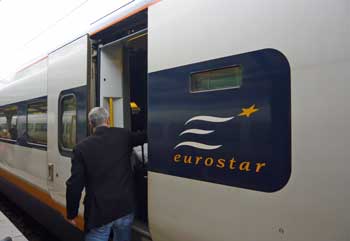
Our recent tests show that Eurostar fares one-way from London to Paris can be as low as €49 if you book about 3 months out, or as expensive as €214 for the same seat if you wait until the day of travel to buy. Round-trip/return tickets can be even cheaper if there is a promotion running.
>>>Check Eurostar prices
If you are on a really low budget, a Eurail Pass isn't a good idea
Here’s the thing. As we’ll discuss below, there are many potential benefits to Eurail Passes, and they will often save you money, but they do cost a lot and they only really save you money when traveling in the more expensive countries.
So let’s say you have a flight to Rome and then US$2,000 to last you a month after you arrive. Buying a Eurail Pass before you go would help you see a lot in that month, but you’d practically need to sleep in parks for your funds to last the whole time. You’d be better off moving slowly in the southern countries, or just in Italy itself, as a way to have the best holiday on your budget. You might also be tempted to use a Eurail Pass mostly on night trains so you can save the cost of a hotel or hostel, but those aren’t ideal for most of us.
The cheapest way to get around Europe by rail is to buy all train tickets online at least a couple months in advance. The fares are low, but they are non-refundable and non-changeable. See how far in advance you should buy train tickets to get those attractive fares.
If more than a little of your travel will be in eastern Europe, a Eurail Pass isn't a good idea
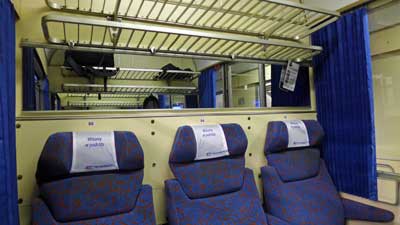
The good news is that the trains operating in this region, and the buses that operate alongside and/or where trains aren’t running, are quite cheap. So if any significant part of your trip will be into this region, a rail pass doesn’t make sense.
Basic types of Eurail Passes
Long gone are the days of the simple options, replaced by specialized passes that are meant to appeal to different styles. It should be pretty easy to figure out which is best for you, and then keep going down the page to decide if it’s worth it at all.
Eurail Global Pass – 4,5, or 7 days within 1 month or 10 days within 2 months
Until recently the minimum number of travel days with 10 days within 2 months, but now you can buy as few as 4 days within 1 month for about €200 to €250 (for first class). This can actually be an interesting strategy if you are planning many shorter and cheaper trips (like within Italy or Eastern Europe), and also 4 or 5 longer trips such as Berlin to Amsterdam. This way you can buy only 4 or 5 travel days and only use them for your most expensive travel days, and just pay as you go or buy cheap advance tickets for your other journeys.
Eurail Global Pass – 15 to 90 consecutive days
This variation allows for unlimited travel on the system for between 15 and 90 total days. They are really only a good idea for people who are certain they are going to travel very often, with much of it being in the north of Europe. The problem with them is that if you really try to get your money’s worth, you will probably ruin your trip by spending too much time on trains in general. On the other hand, if you will be in Europe for 2 or 3 months and plan on traveling around a lot, you can get a LOT of use out of a longer pass. The 3-month pass is around €900 so it’s literally about €10 per day. Imagine going back and forth between Berlin and Munich or Barcelona and Madrid for €10 per day!
One Country Pass
Obviously these are for travel within one country only. Again, they can be great deals if you plan on extensively moving around one particular country.
Where to buy your Eurail Pass
Eurail Passes are cheapest and easiest to buy online, primarily from two main sources which offer all the same products at the exact same prices:
This is a reliable company based in the Netherlands but with fulfillment offices in the US and Ireland. Price of Travel is a partner with this company, and if you use the links of this site we earn a small commission to help keep this site online. Eurail.com is usually cheaper than RailEurope (discussed below) by the way.
They were founded in the 1930s and are based in New York, but owned primarily by the French and Swiss rail companies. They offer free shipping (2 to 3 business days) on all orders of US$399 or more, although now that a mobile version is available, this is meaningless. Price of Travel is a partner with this company, and if you use the links of this site we earn a small commission to help keep this site online.
Reservations on European trains for rail pass holders
For most of the fastest trains between major cities you’ll need to reserve a seat even with a rail pass. It can usually be done just before you leave and the cost is usually around €5. Here’s a full list of which European trains require reservations and which don’t.
Reservations are required on all intercity (longer distance) trains in or involving France, Spain, Switzerland, and Italy. For most trains in Germany, Austria, Netherlands, Belgium, and most of eastern Europe, you can usually find trains that don’t require seat reservations. Often, if you don’t leave until after 9:30am or so, you can ride on any train with no seat reservation, but you have to research each leg to be sure.
How to determine which trains require seat reservations, and also get schedules
You can click on the link just above this section for a list of countries and their seat-reservation policies, but in some cases it’s actually a bit more complicated than that. For example, you can generally ride without a seat reservation on fast ICE (Inter City Express) trains in Germany if you depart after 09:30 in the morning. They do this to free up seats for business travelers who pay full fare, and they don’t mind filling up seats with rail pass holders on trains leaving a bit later.
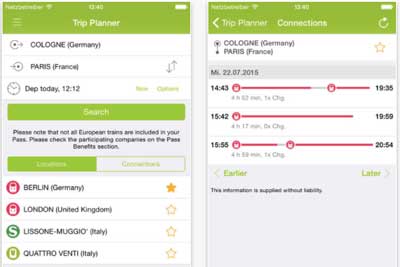
Night trains in Europe are making a comeback
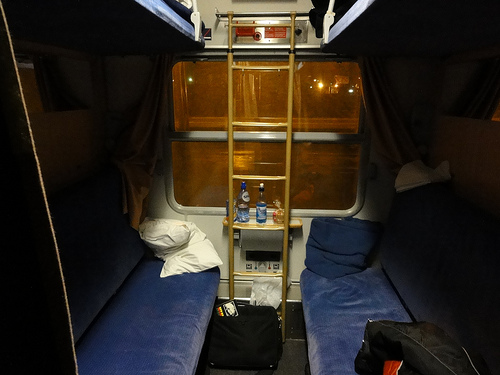
Fast forward to 2024 and night trains are not only expanding service, but they are very trendy. Some of it is nostalgia for the older way of getting around, but most of it is for environmental purposes combined with European hatred for the “low cost airline” experience with RyanAir and Easy Jet etc.
Personally I’m still not a fan of night trains because I find it difficult to sleep on them since they often get decoupled at interim stations in the middle of the night and then coupled onto other trains coming from other places, and I can’t sleep through any of that. But still, they are worth looking into and they are fun to try at least once.
A bit of warning that they tend not to be cheap and even if you have a Eurail Pass you’ll almost certainly want to book a sleeping cabin with a bunk or couchette, and that will come at an extra fee. On the other hand, if you are the sort of person who can sleep sitting upright in a normal seat, then that won’t cost any extra on most overnight trains.
Factors to consider when thinking about any Eurail Pass
Assuming you know which Eurail Saver Pass option is the best one for your type of trip by now, we’ll go over the main factors that should help you decide whether it’s the best idea for you.
Eurail Passes are best for standard ‘medium length’ journeys

However, if you are determined to travel between Rome and Paris, it’s about a 14-hour journey that will almost certainly be overnight. In this case, a cheap plane ticket is probably better, although taking shorter hops on the train is even better, so spend a day or two in Milan or Lyon on the way instead.
And of course, if you prefer to stop in various small towns between the big ones, then a Eurail Pass won’t pay off, except for the traditional kind for unlimited travel in a given period.
Eurail Passes are better value in northern Europe, France, and Spain, and poor value in Italy
Once you do a bit of research you’ll quickly learn that train tickets (and almost everything else) are much more expensive in Germany, Netherlands, Denmark, Sweden, Norway, and Finland than they are in Greece, Italy, Portugal, and Spain. With this in mind, the regional passes can make sense if you are spending time in the south, but the Global Passes almost certainly won’t. Train tickets in Spain used to be fairly cheap, but in recent years they’ve added new high-speed trains between the major cities, and these are quite expensive.
Unlike most other countries, Italy really subsidizes its train tickets so they are quite reasonable even on travel day, and very cheap if you buy a month or more in advance. For example, you can go between Rome and Florence for around €49 if you buy on travel day, and as little as €19 if you buy well in advance. In most other countries, fares are double or triple that much for similar rides.
So consider your planned itinerary. If more than half of it is in the Mediterranean countries then look into a Regional Pass or just buy tickets as you go, because they tend to be pretty cheap. But if you are planning on spending at least half your time in Paris and places to the north of it, then a Eurail Pass is probably a money saver because those tickets are expensive.
Trains are almost always better than planes
Flying sucks, even in Europe
Until you’ve experienced the joy of traveling around Europe by train you might be tempted to “maximize” your time by flying low-cost airlines between each city. This would be a mistake. In order to get truly cheap airfares you have to purchase long in advance, buying non-refundable tickets. You might also have to commit to flights in the very early morning or in the late evening, because cheap tickets on convenient flights sell out quickly.
And again, most European airports are around an hour outside of the city. They are often on the main train lines, which helps, but still you have to deal with the madness of security and also try to get there at least two hours early. From one city center to any other city center it’s about 5 hours minimum, even if they are close, and those are pretty miserable hours.
Train travel is a positive experience

Not only are all the seats comfortable on trains, but you also have an interesting view most of the time. Better still, trains deposit you in the heart of every city, which is usually the neighborhood with the cheapest hotels and food. It’s a wonderful feeling to step off a relaxing train ride, buy a hot dog or sandwich at a local shop, and then be in your hotel room only about 10 minutes later.
Eurail Passes are better than train tickets alone
As someone who enjoys the process of crunching numbers and looking for value, I have to also mention that I’d buy a Eurail Pass even if it seemed like it would cost a bit more than the individual tickets. With a pass you get an extra element of freedom that is worth a lot more than you might expect until you’ve used one.

Let’s say you are heading from Amsterdam to Hamburg tomorrow morning. The 09:00 train you planned for might seem a bit ambitious after a long night out, so you can instead opt for the 10:00 or 11:00 train. As long as you walk into Centraal Station 10 or so minutes before departure, you are on. If you are flying you can’t change your ticket, and if you are buying train tickets as you go you have to be in line at the international desk at the train station at least 30 minutes early, and even then you might miss it if they are busy.
Freedom and getting to feel like a big shot
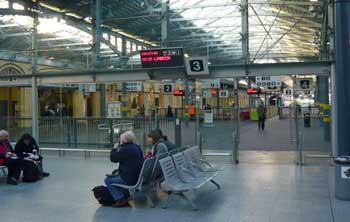
Let’s say you are staying at a hostel in Brussels, and two groups of new friends suggest that you go along with them to their next stops. One group is going to Bruges, which is a short and cheap journey, so you can join them by buying individual tickets (unless you have the unlimited pass, making it free). Then you restart your trip from Bruges, on to your next destination. The other group is headed to Berlin on a night train, which is long and expensive, but with a Eurail Pass you don’t even have to think about the cost. On you go, just like a rich person.
Buying a Eurail Pass is great for those who might run out of money
We all know people who keep meticulous track of every penny they spend, and who are always putting money away for a rainy day. And we all know people who can take a US$100 “entertainment fund” and burn through almost all of it in just a few hours. For the first type of person, a Eurail Pass can help you keep track of expenses, but it’s really the second type of person these are best for.
It’s sad to hear about people who have big plans to see their dream destinations, but they run out of money for transportation halfway into the trip, so they have to just stay put until they fly home. It happens. Locking in your major transportation costs before you leave home, and probably saving money in the process, is a wise move for anyone who isn’t as disciplined as they’d like with their money.
>>>Check prices on Eurail Passes
Bottom line: If you want to keep travel costs down, your choices will usually be a Eurail Pass or buying tickets at least a month or more early
In the last few years, almost every long-distance train ride in Europe has switched to a pricing system similar to low-cost airlines. In other words, tickets go on sale 2 to 6 months ahead of time at very low prices, and they keep getting more expensive as the train fills up and the date approaches. For most trips where a rail pass is possible, this is how things stack up:
Cheapest possible way: Buy advanced (non-refundable, non-changeable) train tickets at least 30 days in advance
Next cheapest way: Buy a Eurail Pass and make seat reservations as you go, usually only a day or less in advance.
Most expensive way: Buy train tickets as you go, or less than a week in advance.
Thinking about it this way should make the choice a bit easier. If you are the type who likes to plan each day and travel segment long before you even leave home, then buy tickets online for the best prices. This can be the best strategy for most shorter trips (10 days or less) because you simply don’t have enough time to change many things as you go anyway.
Buying a Eurail Pass won’t be quite as cheap, but you are buying a LOT of flexibility with the extra money. If you dream of making up your plans as you go, or even making up your plans just a few days in advance, this is almost always your best bet.
But if you wait too long, and just show up looking to buy train tickets as you go, they are going to cost a fortune. As recently as only a few years ago all seats would be the same price on many rail systems, so you could always just wing it. When each country computerized its rail systems so they can sell advanced tickets cheaper, they also had to keep track of seat reservations, so the whole pricing structure had changed to favor advanced ticket buyers and rail pass holders over those who’d prefer to just hop on any train as it is leaving the station.
Have a rail pass or itinerary question of your own?
It wasn’t planned but scores of people began asking me rail pass and itinerary questions at the bottom of this article and a few others. I’m happy to keep answering them and now I’m trying to organize them better as well so they are easier for other people to find.
If you have a question about specific types of European rail passes, please ask it in the comments below.
But if you have a question more about a European itinerary or other non-rail-pass questions, please click over to the European itineraries Q & A article and ask in the comments of that one.

Hi Roger,
Need help on itinerary. We are 2 adults and 2 teenagers.
Paris arrival on 27thMay morning. Spend 3 nights in paris
Rome arrival on 30th May Morning by flight from Paris
Depart on 19th June from Paris to home
Want to cover a little bit of Italy, Switzerland (cover the scenic routes), Germany (if possible) Amsterdam and then London. After London need to return to Paris to catch the flight on 19th June.
– What are the best options? like Eurail pass or individual train tickets?
Sarav,
If you want to cover all of those places you mention in those 3 weeks, then I think a rail pass would be ideal. You could either go with the 10 Days out of 2 Months option to save a bit, or pay just a bit more for the 21 Consecutive Days version. You probably don’t want to do more than 10 travel days anyway, but since you are only there for three weeks it’s probably worth paying a bit more to be able to travel any day you like, even for day trips.
Getting from Rome to Florence and Venice is easy enough, and after Venice you can head to Milan and then take a train to Interlaken or Lucerne to enjoy Switzerland. From there you can go almost anywhere in Germany before heading to Amsterdam. From Amsterdam to London you’ll take the Eurostar Train, and the earlier you buy that train ticket the cheaper it’ll be. You can also get a 25% discount if you have a rail pass.
Once you have your itinerary a bit more settled I can try to help more, but it does sound like a rail pass could be good for this trip. -Roger
Thanks Roger, I thought so as well, was thinking to buy a 15 consecutive days pass.
Current plan in Italy:- is the below a good plan for 5 to 6 Days (or should I cover Florence instead of Milan or both?) May 30 to June 4
Rome and Vatican – 2 days (is it sufficient or need 3 days)
Pisa – 1 Day (day trip from rome) and then head to Venice
Venice – 1 Day (or does it need 2 days)
Milan – 1 Day
Current plan for Switzerland :- Planning for 4 days (June 5 to June9)
– need to plan based on Railpass how many scenic routes can cover
– any suggestion here would help me.
Germany – planning for 2 days (June10 & 11)
Amsterdam – planning for 3 days (June 12 to June 14) leaving June 14th Night to London
London – June 15 to June 18 (June 19 heading back to Paris)
Let me know whether the above is a good plan. Any suggestion would help me to plan. Thanks in advance.
Sarav,
Two days in Rome is a real rush, even if you only spend half a day at the Vatican. It’s such a big city filled with worthwhile attractions that I usually recommend at least 3 nights if possible. Skip Milan on this trip, but a day or two in Florence seems like a good idea. It’s cheaper than Rome, less chaotic, and very close to Pisa for a trip of a few hours to see the few main sights there. Venice is one not to skip, but fortunately you can see pretty much all the main things in 24 hours or so. Venice is insanely crowded from about 9am until 5pm every day, so plan some of your sightseeing and wandering for the morning or evening (and pay a bit extra to stay on the main island instead of on the mainland. It’s money well spent for that one night).
Switzerland is gorgeous and it’s best to skip the big cities and instead base yourself in either Lucerne or Interlaken for a few days. Just doing hikes and short day trips from either of those will get you a great look at the Alps. There are a few private rail lines that aren’t part of the main rail passes, and unfortunately they are quite expensive. I’d think you’d have a wonderful time just sticking with the main rail lines (and maybe doing one or two of the others on a future trip), but it’s just personal preference.
With two days in Germany, you’ll basically have one stop. Coming from that direction you might be best off spending them in Munich, which is at least on the way. Berlin is fantastic but too far out of the way for your visit.
Amsterdam is compact enough to really enjoy in 2 or 3 days, so that looks ideal. And 3 or 4 days in London seems like a good amount of time as well.
Overall I think you’ve got a very good itinerary with some nice contrasts along the way. By tweaking it just a bit as I’ve suggested it should be just enough time in each place to really appreciate it all. Again, feel free to ask any other questions you might have. -Roger
Thanks Roger. That is really good info, let me go and tweak my plan.
Another thing I wanted to check is as I will have luggages with me can I put them in stations if I am just going into the city or should I check in hotels and then do my sightseeing? Do the train stations have lockers to store luggages?
Thanks again.
Sarav,
Yes, every major train station in Europe (including pretty much any train station where you’d want to get off for some sightseeing) has either a Left Luggage counter (a room with someone to check bags in and out) or luggage lockers, and often both. You might pay about €5 for 2 or 3 hours, or a bit more for a longer time, but it’s still a bargain compared to the alternatives. -Roger
Hi Roger ,
First of all accept by gratitude and congratulation for this wonderful information .. I am looking forward to travel Italy in Jan 2014 for one week , I have a plan to travel Milan, Rome , Venice and Florence .. Kindly advice me how should I plan .. Pls advice me on following
1. Shall I get one country Eurail pass for 5 days or buy separate travel ticktes ?
2. in case need to buy Eurail pass then what is advisable , buying online in advance or from Eurail Aid centre after reaching Milan …
Pls suggest and advice .. Thanks in advance
Yogesh
Yogesh,
With only those cities in mind, I don’t think I’d recommend a rail pass. Those cities are all fairly close to each other so the tickets don’t cost too much on their own.
For the best prices, buy the rail tickets online at least a month or two in advance, on the official Italy rail website. They will cost quite a bit less than a rail pass. -Roger
Hey Roger,
thanks for this wonderful article! I am a 19 year old and was in hopes of travelling through Europe for as long as possible and visiting as many places as possible! I feel a global pass may help me, but I would love your opinion! Also, is this too clustered of a trip? It may be a little jumpy (mostly near the end, but I would LOVE to go to Scotland and Ireland too) I was thinking of cutting out Switzerland – Netherlands, and pushing Scotland and Ireland up near the top. And then taking a flight from Italy to Greece and finishing there! Making my trip shorter! Let me know what you think!
Trip Duration: 52 days
London – day 1 – 4
*Overnight train to Paris*
Paris – day 5 – 7
Barcelona – day 8 – 10
Nice – Day 11-12
French Riviera – Day 12 – 14
Italy – Day 14 – 20
Switzerland – Day 21 – 24
Munich – Day 24 – 26
Vienna – Day 27 – 30
Prague – Day 30 – 32
Berlin – Day 33 – 35
Amsterdam – Day 36 – 39
London – Day 39 – 40
Scotland – Day 40 – 45
Get to England – day 45
Get to Ireland, hopefully day 45
And Finally, Ireland – day 45 – 52
Sp
Sarah,
I don’t think this looks like too clustered of a trip. And I do think a Global rail pass would be ideal for this. It looks like a 10 Days in 2 Months pass would be ideal, so you could use it for only your longest or most expensive 10 trips and pay as you go for any others. For example, a trip from Florence to Rome only costs around €20 so you can just buy that at the station, while most of your others would be more like €50 to €90 (in 2nd class) if you bought them as you went.
Amsterdam is one of the world’s great cities, and I’m particularly fond of it (I even lived there for awhile), but Greece is also very worthwhile so it would be great either way.
Here are a few other notes…
There are no overnight trains from London to Paris. The only service is the Eurostar, which takes a bit over 2 hours, and runs from early morning through late in the evening. Buy that ticket as early as possible for the best price.
Nice is part of the French Riviera, and it’s the perfect budget city to base yourself to explore the area. So you might want to just sleep there and take day trips to Cannes or Antibes or Monaco. That would be much cheaper than trying to find a hotel or hostel in some of the very expensive towns in other parts of that area.
If you do decide to stop in Switzerland, I recommend Interlaken, Lucerne, or both, rather than the big (and very expensive) cities. You could spend 2 or 3 days in one of those towns and it would be very worthwhile.
Hopefully this helps, and feel free to ask any follow up questions if you have them. -Roger
Hi, I’m starting to plan my trip through Europe. It will be from April 1st to August 15th (aprox). My idea is to visit about 21 countries. I wast thinking about buying the Eurorail global pass 3 months, but I’m not too sure about it. I’m 26 years old, traveling alone. Do you think is it worth it to buy it. Do you know what is the best route to take in which I can save mostly time and be able to visit as many cities as possible.
I really appreciate your help. I’m planing everything by myself and honestly I don’t know where to start from.
Thank you!!
Diana,
A Global Eurail Pass could be worth it, but only if you are sure that you are going to want to cover a LOT of ground during the period it’s valid. It sounds like you are going to be in Europe for 4.5 months, so you’d want to spend the other 1.5 months in places with cheaper trains or that aren’t part of the Eurail system. Great Britain is its own system, and southern Europe has fairly cheap trains when you pay as you go, so you’d want to use the pass for central and northern Europe for the most part.
To be honest, you are still too early in the planning stages to make this decision about getting a pass. Many people prefer to stay for a week in each city and then take a train only 2 or 3 hours to the next major city on such a long trip, and for that you wouldn’t want a pass. But if you plan on traveling every three days or so, and covering most of Europe, then a pass would be a great deal. So you really need to study a map and choose the places you have in mind, even if it’s just a loose plan. When you are at that point I’ll be happy to help you figure out the best route and method of transportation. -Roger
Hi Roger,
i am planning a trip for July 2015 (yes I know its far away lol) I had a few questions.
I was planning on getting a Eurail Global Pass 15 days
I would like to see Paris, Rome, Barcelona, London and Dublin. Any ideas of how many days i should be in each and how to go about traveling? Maybe a itinerary idea or something. I appreciate your help.
Thank You.
Samantha,
There’s no harm in getting a basic plan ready this early, but you probably don’t want to start locking things in until a few months before you leave.
To visit London you should allow at least three nights for a first trip, and longer is better. Britain has its own rail system, so Eurail Passes aren’t valid. And to get to or from Paris you’ll ride the Eurostar, which is also a separate system.
You can see Dublin in two days, and a Eurail Pass does work in Ireland. Honestly, Dublin is interesting but its the least charming part of Ireland. If you can spend at least a couple days elsewhere in Ireland, you’d enjoy it even more. If you only have time for a 2-day stop in Dublin, you might actually think about saving Ireland for another trip where you can spend at least a week touring around.
For Paris you should allow at least 3 nights, and the same for Rome. Both are huge cities filled with tourist attractions and local culture, so any less time and you’d barely scratch the surface. Barcelona is also huge, but at least you could do the highlights in two days, although three is better.
So if these are the only stops you are considering, a Eurail Pass won’t help at all. They are really well suited to people who are covering a lot of ground over at least two weeks, and you are spending a good chunk of time outside of the Eurail zone.
Feel free to comment here again when you have your plan more worked out, and I’ll be happy to tell you what I think. -Roger
Hi Roger,
Just want to get your suggestions regarding our 20-day trip to Europe in June. We are a family of 4 with 2 kids, 16 and 12. We’d like to arrive in Paris and leave from Amsterdam. We are pretty loose as to which countries to hit. I was in Paris last year with one daughter so would like to be there only for 2 days. I was in Amsterdam 8 years ago so maybe we can be there for 2-3 days. Italy would be nice to visit but we are open to suggestions. My husband loves to take trains so maybe a Eurail pass would work for us. Night trains would also be nice to cut down on hotel fees. Let me know what you think.
Thanks,
Roxanne
Roxanne,
Starting in Paris and leaving 20 days later from Amsterdam, you could go almost anywhere in Europe in between. I usually prefer to take a look at a proposed itinerary and then comment about where it works and where it might be improved.
For starters, have a look at these two articles I wrote:
Where to go in Germany in 1 to 3 weeks
Where to go in France and Italy in 2 to 3 weeks
In addition to those possibilities you could visit Vienna and/or Salzburg in Austria, and Interlaken and/or Lucerne in Switzerland. You could also potentially visit Budapest or Prague, or even Krakow.
When heading back to Amsterdam it could be fun to stop in Belgium for a day or two. Bruges is small enough to appreciate in one day, although two is nice, and you can see the wonderful things in the city center of Brussels in only a day.
So those are many possibilities to consider off the top of my head. However, in 20 days I think you’d only want to visit 7 or 8 cities at most, including Paris and Amsterdam. It all just depends on which direction you want to go in once you get there.
Depending on how far you actually plan on going, a Eurail Pass could be ideal. I’ll be happy to give you advice on that part once you figure out which places you want to visit.
As for night trains, they aren’t really a good way to save money on hotels for the most part. Even with a rail pass, you have to pay a bit extra to reserve a seat (very uncomfortable for a whole night) or about €20 to €30 to reserve a bunk in a compartment. With 4 bunks you are paying as much as a hotel room, and you miss out on all the scenery as well. For journeys that take 9 to 12 hours overnight, night trains can be efficient compared to spending all day on a train, but most major tourist cities in Europe are between 2 and 6 hours apart by train, so they are enjoyable and scenic.
Once you make a few more decisions I’ll be happy to help more on this. -Roger
Hi mate,
This is our itinerary and I would love any advice on if you think Eurorail is worth while to book or book individual train systems
Starting from Perth flying out 28th of June.
Get into London 28th of june (6.50pm)
Leave Perth – Arrive London 6.40pm 28th of June
London 28th of June
London 29th of June
London 30th of June
London 1st of July
London / Amsterdam 2nd of July
Amsterdam 3nd of July
Amsterdam 4rd of July
Amsterdam / Antwerpen (belgium) 5th of July
Antwerpen 6th of July
Antwerpen 7th of July
Antwerpen / Paris 8th of July
Paris – 9th of July
Paris – 10th of July
Paris / Geneva (Switzerland) 11th of July
Geneva – 12th of July
Geneva – 13th of July
Geneva / Nice (France) 14th of July
Nice – 15th of July
Nice – 16th of July
Nice – 17th of July
Nice – 18th of July
Monaco – 19th of July
Nice / Athens – 20th of July
Athens / Santorini – 21st of July
Santorini – 22nd of July
Santorini – 23rd of July
Santorini / Athens – 24th of July
Athens / Perth HOME
I know its alot!
Cheers,
Brenton
Brenton,
You definitely don’t want a rail pass for this itinerary. Here’s why…
London to Amsterdam will be done on the Eurostar, which is its own system and the best you can do with a rail pass is get a discount.
Amsterdam to Antwerp is only 1 hour 12 minutes on the Thalys or 2 hours on intercity trains, and you can get tickets for as low as €22 each for adults if you buy them in advance from the Netherlands official rail site.
Antwerp to Paris to Geneva to Nice are all relatively cheap train rides, at least compared to what you’d pay for a rail pass per day. Again, buy those a few months in advance from the official websites of those railways and you’ll get good prices.
Unless you have a specific reason not to, you are better off visiting Monaco as a day trip from Nice. The train literally takes 20 minutes, so you could do two day trips if you want. Monaco is gorgeous, but there are no cheap hotels at all, so staying overnight would be far more expensive than to stay another night in Nice and take the train over.
You can’t get from Nice to Athens by train, and even back when you could, it would take close to a full day. So you’ll want to fly from Nice (or perhaps somewhere in Italy) to Athens. And from Athens to Santorini you can take a ferry or fly. The flights should be cheap if you buy them well in advance.
So if you buy those train tickets at least a month, or even a few months in advance, it will be much cheaper than any rail pass. -Roger
Thanks for the great advice, absolute life saver!
legend
Hi Roger,
I will be studying abroad in Paris for 4 months (January-April) and am wondering whether the Eurail 3-month continuous pass for $1157 would save me money. The $1157 price is after the 20% discount for winter travel through March 31st, so I would be using it for January-March. I will have 3 day weekends and am planning on travelling to a different region of France on most weekends during this time period. This will involve taking an initial train from Paris to the given region and then taking local trains between various points of interest within the region. I will also make day trips to more nearby points of interest on Tuesdays. I also plan to occassionally travel just over the border into nearby parts of Germany and Spain. Most of my trips will probably be planned at the last minute, so I doubt that I will be able to book my tickets more than a week in advance. During my spring break I plan to travel around Italy. I also plan to travel after the 3 month pass expires in April. What do you recommend?
Thanks!
Alexander,
This is a tricky one because France does not appear to offer a single-country pass to residents or tourists, or at least not one that lasts nearly enough time for you. Most other countries do offer some sort of pass for locals, so you’ll want to really make sure France doesn’t before you’d consider this.
Assuming they don’t, then this could be a good deal for you. So for about US$400 per month, you could ride the rails all over France (as well as everywhere else in Europe). If you took 12 rides per month, that’s about US$33 per ride, which would be a really good deal if you traveled at least a couple hours each time on average. The other complication in France is that you always need a seat reservation on those longer journeys, which cost €9 (US$13) each. For some regional InterCités trains you don’t need a reservation, but on others you do and it costs €6, so you’ll have to add that to your budget, unfortunately.
I’ve just checked a bunch of train fares for France and it looks like the cheapest fares for most routes that are longer than an hour or so is €25 (US$35). To get those cheap fares you have to buy the tickets weeks or even months in advance, and fares on those same routes for the coming days are around double or triple that much.
The great thing about using a rail pass is that you can go with almost no planning, and cross the country every weekend if you like. You do have to reserve a seat most times, but that time of year you should have no problem reserving one just an hour or so before you want to leave. So a rail pass gives you way more freedom and flexibility, even if it doesn’t save you a ton of money.
So if you can afford a pass and the seat reservations, it’s probably a great way to go. Still, I can’t be sure that there isn’t some sort of pass or program that gives cheaper tickets to people in France. A lot has changed in the past few years in European rail, and I know less about the French system than I do many others. Good luck, and let me know if you have any other questions. -Roger
Thanks! Your information on the price of last minute train tickets for longer trips within France helps to clarify things. I do think the pass will save me at least a little money now. I will look into whether there are any France-only options. I’ll let you know if I have any questions. Thanks again.
Alexander
Hi Roger,
I am so lucky to have come across your website and specifically this thread because it has helped me in understanding and planning the trip to europe much better.
After going through most of the comments my current itinerary is
Arrive in London(3 Nights)
Eurostar to France(takes about 3 hours)
Paris(3 Nights)
Paris to Geneva(EU Rail- About 3 hours)
Geneva(1 Night)
Geneva to Interlaken(Local train)
Interlaken(1 Night)
Interlaken to Zurich
Zurich(1 Night)
Zurich to Rome(EU Rail-about 8 hours)
Rome(3 nights)- which includes a trip to Vatican.
Fly out of Rome or Rome to London.
The dilemma i’m facing right now is that the EU Rail Select pass with 3 countries is the best fit. But with France not covered under the select pass,what is the best way to get out of France?
Please help me in planning the itinerary better. Also i wanted your suggestion if including Austria in this would be better?
Thanks Roger.
Sai,
Yes, the fact that France is no longer included in Select Passes really complicates things. On the other hand, I’m not sure that it would be your best option even if you could do a pass with France included.
As you know, the Eurostar is its own system, so you are basically looking to go from Paris to Rome with 3 stops in Switzerland. I’m pretty sure your best bet will be to just pay as you go from Paris to Zurich, and then fly to Rome. It doesn’t look like a really cheap flight, but it’s probably at least a bit cheaper than the train, and also a bit faster. You might even look at changing your itinerary a bit to find a pair of cities with really cheap flights.
Those train tickets in France and Switzerland are expensive if you buy them on the day, but you can get them at good discounts if you buy them online a month or two in advance on the official rail websites of the country (not on raileurope). That’s really the best you can do. -Roger
Dear Roger,
Thanks a lot for the reply. Based on your experience what is the most ideal itinerary for these set of countries(France,Italy,Switzerland,UK). Also for the second part of my question,does it make sense to squeeze in Austria and spend 2nights together in Vienna,Salzaburg?
Sai,
Since you asked, I already think you are rushing the trip, even if you don’t include Austria. If you are working with two weeks, which it sounds like, then two countries would be better, or perhaps two countries plus three days in London. It sounds like you might have specific reasons for the choices you’ve made, but just in case you haven’t, I’ll give you my thoughts on what you have so far.
Three days in London is enough for a quick introduction, and I wouldn’t try to do it in two. Same with Paris, and taking the Eurostar between them is kind of fun all on its own, and very efficient. If you are visiting in winter then I can understand why you might not want to explore more of France on this trip, but if you are going another time of year you might want to add in another stop or two.
There’s a lot to love about Switzerland, but most visitors agree that it tends to be in the small Alpine towns rather than the cities. Both Zurich and Geneva are impressive, and really, really expensive. They are international banking hubs and high-end shopping destinations. Unless you have specific things to see there, you might just choose Interlaken or Lucerne, or both, and enjoy the gorgeous outdoors and views and hikes and all of that. They are a bit cheaper as well, though still quite expensive.
Vienna is more of a tourist city than either of the large Swiss cities, and Salzburg is a magical town as well, so those are alternatives to consider, just as you asked about. You could have a great time in two days each in those towns, or even one day in Salzburg if you prefer to rush around.
If you have exactly three days to spend in Italy, then I think spending them all in Rome is a fine idea. That’s the minimum I recommend because it’s a big, sprawling city that is loaded with amazing things to see. If you had one more day you could add in Venice, which is actually best appreciated in about 24 hours (as long as you actually stay on the main island rather than in the suburbs). But squeezing Venice into your flight schedule might be tricky. Honestly, if you only have two weeks to work with, you should think about saving Italy for another trip. The whole country is like a tourist attraction, with Rome being the most stressful part. Rome is a very worthwhile pressure cooker if you can do it before or after some of the more gentle parts of Italy.
So if you are visiting family or have some other specific reason to hit all the places on your original list, I’m sure you’ll have a great time. But if that’s more like your first draft, then you might consider some changes. I’m happy to comment more if you have any other questions. -Roger
Hi Roger- great info on your site and much appreciated. I am a family of 3 (2 adults > 26) and a 3 year old. We will be in Europe for approximately 90 days next summer. We will be spending the majority of our time in Germany and Switzwrland, with some time in Austria as well as our bases.. We plan on traveling nearly every day via train, (the every day being from our apartment to town for example) especially in Germany and Switzerland. I was planning on getting the eurail global 3 month pass but thought I would ask if you agree. In Switzerland, we will be staying for 14 plus days using the trains every day in the Bermese Oberland region. I know the pass doesn’t include gondolas nor the jungfrau but as a side question, does it cover the Berner Oberland trains from grindelwald to interlaken and the like? Trains in Switzerland can be expensive (a 15 day pass for two coast approximately $1500 and doesn’t include jungfrau either).
Anyway, while in Europe we plan on using the trains nearly every day, including local trains. A pass seems more convenient but is expensive. Outside of local trains, we will be taking trains from Nuremberg to Prague (round trip), Munich to salzburg to Vienna to Budapest (round trip), Nuremberg to cologne, into Brussels, to Strasbourg France, down to Basel, to interlaken and then to Zurich. Plus- who knows where else.
With a 3 year old, I find trains easier so wouldn’t opt for a plane unless it was a super long distance. I tried to price many of the trips myself but sites are always having issues.
Also – are any inner city tram lines covered with the global pass (such as Vienna and Zurich) and the does it include the U-bahn in Nuremberg and Munich? If not, that could change things.
Thanks in advance for any assiistance,
Matt
Matt,
I think you can do a lot better using local passes rather than a Eurail Pass. First off, in Germany, Austria, and Switzerland, the U-Bahn systems are generally not included in rail passes because they are run by city governments. The S-Bahns are covered by Eurail Passes, as they are mostly run by rail authorities, but it would be hard to use them enough to really make a pass good value. As you might know, you can get a daily pass on a U-Bahn for maybe €6 per day, and a weekly pass for around €25 or so. So those subway and tram rides just don’t amount to much.
On the S-Bahns, which are more likely suburban rail lines, you can also get daily or weekly passes that are only a bit more expensive, depending on how many zones you need. Even if you are regularly going between cities that are an hour or two apart by normal train, I think you can get a much cheaper pass when in Germany to cover those.
By the way, I believe that Berner Oberland Railway is one of the private ones where a pass gets you a 25% discount, though they seem to offer their own passes for that region.
Those other trips you mention within Germany and to nearby cities should be fairly cheap if you buy the ticket in advance once you are there. You might know about the weekend deal in Germany, which allows up to 5 people to travel for €42 on Saturday or Sunday (excluding some express trains). Since you have so much time in a fairly small region, I’m confident that you can find better deals for those short trips once you are there. However, this is assuming that you are planning on taking trips of an hour or less from your base many times per week. If you are actually planning on going 90 minutes or more there and back each day, then it’s possible that a continuous pass could potentially save some money and also some hassle (of buying local passes every day or week).
If you are planning on traveling longer distances than city-to-suburbs on a daily basis, tell me a bit more about your plans and I’ll help you figure out the best strategy. -Roger
Roger,
Thanks for the response. Based on your response I did some digging. As I will be in the Nuremberg area for 30 days I found a 31 day pass for 2 adults and 1 child (could have up to 4) that costs 88 euro and includes something called the VGN area – all transportation in Nuremberg and regional as far as bamberg, ansbach, etc. a pretty large area. Only caveat is on weekdays travel cannot start until after 9am. This works perfect for me as I am visiting friends in this area. (I even confirmed the price via email communication). . The Berner Oberland pass for 8 and 6 days will cover me nicely. I typically like first class but these are all 2nd class but the trains are more than fine in 2nd class. I am still pricing out the long distance trains but it seems that I will be better off without the 3700.00 for two in the global 3 month pass. Thanks for your help.